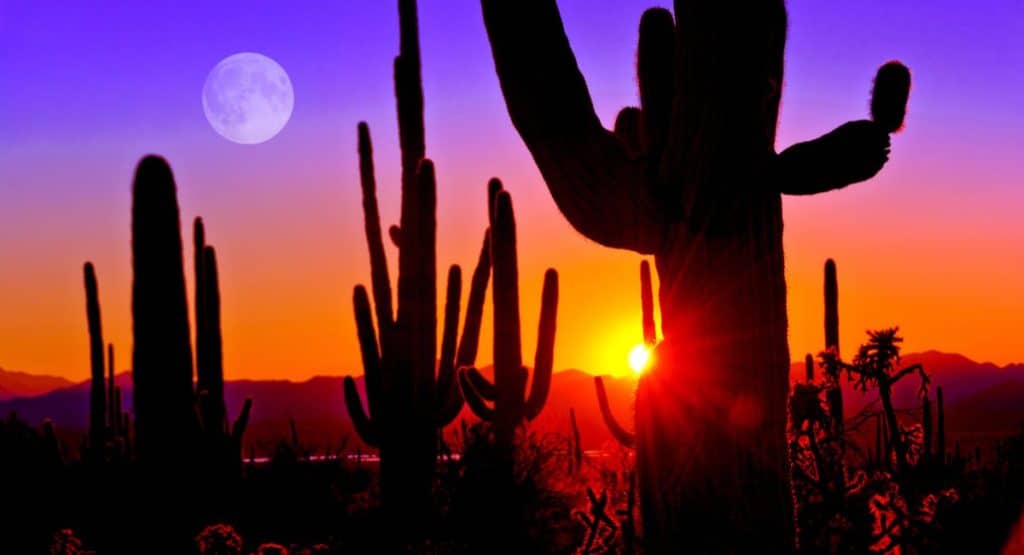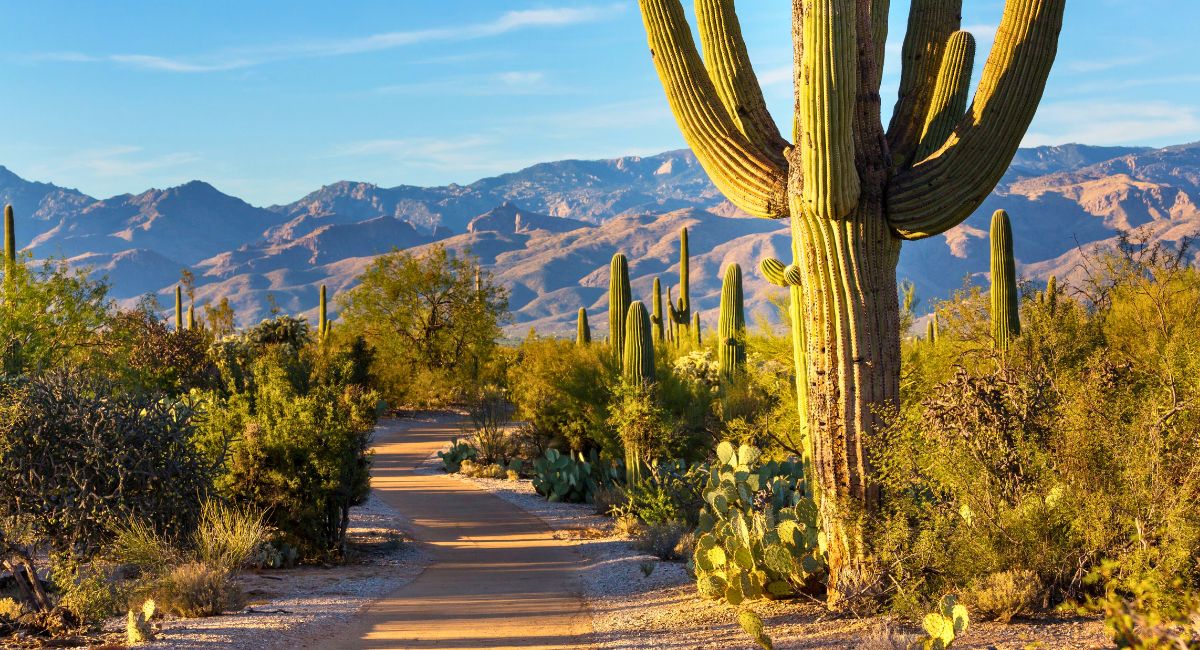Spring is the ideal time to visit Arizona Saguaro National Park. The desert ecosystem explodes with color and life between mid-April and early June. The 91,327-acre park is located in the Sonoran Desert, which extends through Mexico, Arizona and southeastern California. It is the only place on earth where the Saguaro cacti for which the national park is named grow wild. The majestic cactus tower is no less than 22 meters high and can live up to 200 years. They have become an iconic symbol synonymous with the American West.
Saguaros usually start blooming in the second half of April. They produce large white flowers with bright yellow centers that bloom towards the tips of their stems and arms; flowering reaches its peak in late May or sometimes only early June. Saguaros won’t be the only cactus species to bloom during a spring park trip. The entire desert will be covered with brightly covered flowers. During your visit you can spot flowers such as the bright yellow Prickly Pear, the orange Staghorn Cholla, the magenta Strawberry Hedgehog and the bright pink Chain Fruit Cholla. It’s the best time of year to experience Arizona’s breathtaking desert in all its glory, and there’s still plenty of time to plan an epic vacation this spring.
Planning your trip
Saguaro National Park is divided into two parts around the city of Tucson, Arizona. Tucson is a fantastic destination with delicious authentic Mexican food and picturesque adobe houses. While you’re in town, make sure you stop by the iconic El Charro Cafe. In addition to being the oldest continuously family-run Mexican restaurant in the United States, El Charro is also the birthplace of the chimichanga. When the restaurant’s founder, Tia Monica Flin, accidentally dropped a burrito into the fryer, she exclaimed, “Chimichanga!” and the tasty starter was born.

There are plenty of nice places to stay in the Tucson area. For a romantic stay you can visit the Adobe Rose Inn– a bed & breakfast in a historic brick house from the 1930s. There are six rooms with unique features such as stained glass and a kiva fireplace, as well as a seasonal outdoor pool.
If you’d rather get up close to nature during your trip, the park has six designated backcountry campsites. You will have to hike 4 to 20 miles with your equipment. They are not accessible by car. You must purchase a backcountry camping permit in advance, which you can apply for online at Recreation.gov.




